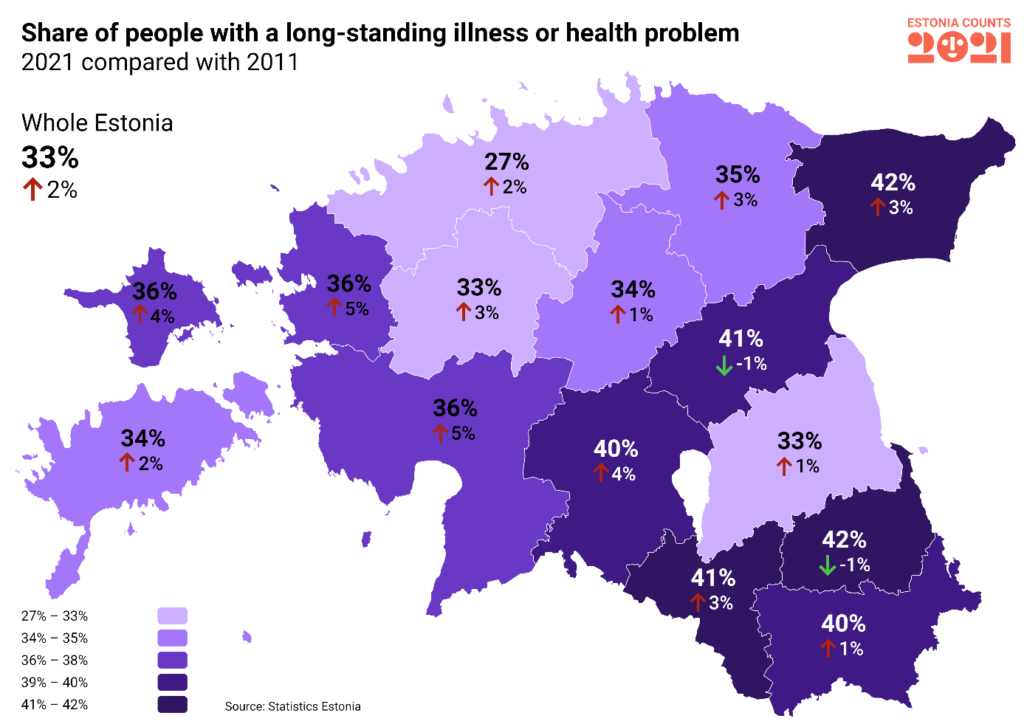According to the 2021 census, young people in Estonia have more health problems than they did ten years ago.
The prevalence of health problems among young people is now higher than at the time of the previous census, according to Statistics Estonia, the country’s official statistics agency.
Seven per cent of children aged 0–14 had a long-standing illness or health problem in 2011, compared with 8% now. An even bigger increase is seen in the 15–29 age group: 14% of people of that age had a long-term illness or health problem in 2011, whereas now 17% do.
Among the general population, the results of the 2021 census show that a third (33%) of Estonia’s population have a long-standing illness or health problem. This figure was slightly lower – 31% – at the time of the previous census in 2011.
Altogether, 35% of women said they had a long-term health problem, while the figure was lower for men – 29%.
An estimated 28% of the population feel limited in their daily activities because of a health problem and 18% of them said they were somewhat limited and 10% felt severely limited.
The largest share of people with long-standing health problems is found in Põlva and Ida-Viru counties, where 42% of people live with long-term health issues, which is almost nine percentage points more than the Estonian average (33%). Inhabitants of Harju County are the healthiest, with 27% estimated to have a long-standing health problem.

Share of older people limited by health problems has decreased
As expected, the oldest age group has the highest proportion of people with a long-standing illness or health problem. 69% of people over the age of 65 in Estonia suffer from a long-term illness or health problem. This percentage has remained stable between the two censuses.
The biggest positive change is that in the oldest age group (65 and over), there has been a significant decrease in the proportion of people who feel that health problems severely limit their daily activities, from 39% in 2011 to 24% in the 2021 census.
“The fact that older people, despite their health problems, do not feel significantly limited in their daily lives shows that, in addition to good health services, our society is increasingly attentive to different needs, and this allows people to live a full life even with health problems,” Liina Osila, the population and housing census project manager at Statistics Estonia, said in a statement.

People with higher education have the fewest health problems
The census results also highlight the link between educational attainment and health status.
“Looking at how educational attainment relates to health, it turns out that people with higher education have the lowest rates of long-term illness or health problems,” Osila said.
All in all, 34% of people with higher education have a health problem and 27% feel limited in their daily activities because of it. Of those with secondary education, 39% report having a long-standing health problem and a third (33%) are limited in their everyday activities. Among people with basic education, 40% have a health problem and 36% feel limited by it in their daily activities.
Information on the state of health was collected through the population and housing census survey from the end of 2021 to the beginning of 2022. Nearly half of the total population of Estonia participated in the survey.

